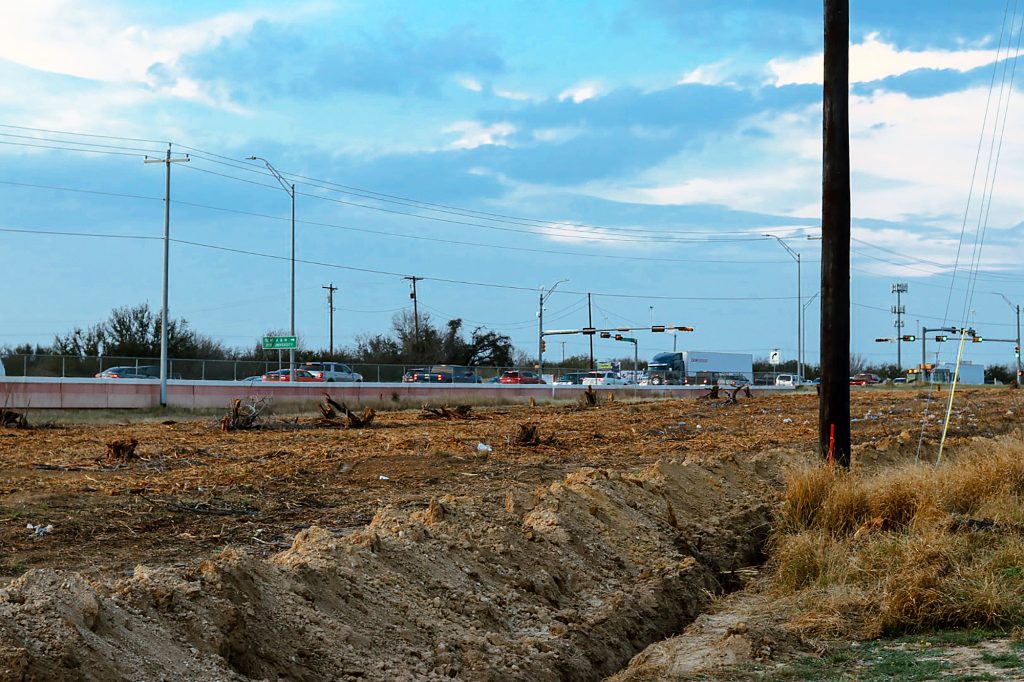ENVIRONMENT: Master Plan: A hope for preservation
By Yessica Hernandez
Bridge contributing writer
Published Wednesday, Feb. 21, 2024
The high pitch of cicadas sound through the air, birds sing, grasshoppers leap about and lizards crawl upon the dry grass. Those are the sounds students and faculty of the biology department at Texas A&M International University fear may be lost with the Master Plan.
“We can have growth and opportunities for students … and also that hands-on experience that I think is really beautiful,” Instructional Assistant Professor of biology Amede Rubio said.

Trees along Loop 20 are now removed near the TAMIU campus entrances, as seen on Feb. 9.
The undeveloped land that surrounds TAMIU houses a variety of plants, insects and animals, which the biology department uses to conduct research.
“I think it’s going to impact the natural environment that we do have in the surrounding areas significantly … as the University expands into … the ranch land that we have still available, a lot of the wildlife is going to be pushed further back into the fringes of … this landscape,” Rubio said.
The land that surrounds TAMIU has been mostly untouched for years, except for recent development around the western side of campus along the Bob Bullock Loop 20 entrances.
“I don’t know if they conducted any wildlife surveys for any threatened and endangered species both animal or plants,” biology graduate student Elwynn Gregory Sherman II said. “I think it would definitely be worth it because … we’ve seen horned lizards … and they’re threatened and endangered species.”
Researchers are able to frequent the area and discover native species of plants that could potentially be used for medicinal purposes.
“Who knows? We might stumble onto the next-best treatment, but we will never know if these places go away,” Rubio said.
The Master Plan not only includes the addition of new buildings but also more roads and parking areas.
“I predict there’s gonna be more conflicts between animals and people, whether that’s animals interacting or people interacting with animals directly … or like a higher mortality rate of animals that we’re gonna see on the road,” Sherman said.
With the addition of new buildings, biology students may be forced to conduct research elsewhere.
“Any sites that are far away from campus,” Rubio said. “People would have to drive and things like that. And right now, we don’t have access to vans or buses or any type of fleet vehicles to take students to and from … that also presents a big challenge … for our courses moving forward.”
